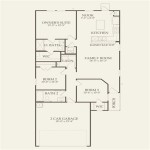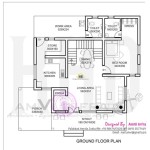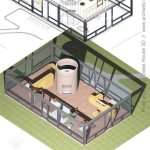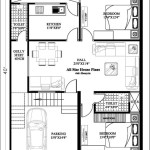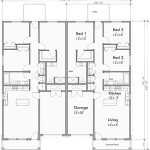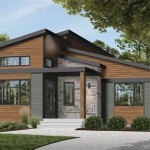Best House Plans for Empty Nesters
The departure of children from the family home, often referred to as becoming an “empty nester,” marks a significant life transition. This transition frequently prompts a reassessment of housing needs. Many empty nesters find themselves in homes that are larger than necessary, built for a bustling family life that no longer exists. This realization leads to a desire for a more manageable, comfortable, and lifestyle-appropriate living space. Selecting the best house plan for empty nesters requires careful consideration of factors like accessibility, maintenance, budget, and future needs. This article explores key aspects of house plans tailored to this demographic, providing insights into creating a living space that enhances their post-child-rearing years.
The Importance of Downsizing and Right-Sizing
Downsizing is a common strategy adopted by empty nesters seeking to reduce their financial burden and simplify their lives. A smaller home typically translates to lower property taxes, reduced utility bills, and diminished maintenance requirements. However, the term "downsizing" can be misleading. Instead, the concept of "right-sizing" is more appropriate. Right-sizing involves choosing a home that meets current and anticipated future needs without sacrificing comfort or functionality. This might mean opting for a home with fewer bedrooms but more thoughtfully designed common areas, or a home with a smaller yard that is easier to maintain while still providing outdoor space for enjoyment.
The process of right-sizing requires a thoughtful evaluation of the homeowner's lifestyle. Consider how often guest rooms are used, the importance of having a formal dining room, and the amount of storage space required. It's crucial to distinguish between essential needs and sentimental attachments to unused spaces. Many empty nesters find it beneficial to declutter and eliminate possessions that are no longer needed or used, further streamlining their living arrangements and contributing to a sense of liberation.
Furthermore, right-sizing isn’t just about square footage. It's about optimizing the use of available space. Open-concept floor plans, for example, can make smaller homes feel more spacious and conducive to entertaining. Integrating smart storage solutions, such as built-in shelving and multi-functional furniture, can maximize efficiency and minimize clutter.
Key Features to Consider in House Plans
Several key features are particularly relevant when selecting a house plan for empty nesters. These features prioritize comfort, convenience, accessibility, and long-term livability. Failing to incorporate these elements can lead to dissatisfaction and the need for costly renovations down the line.
Accessibility: As individuals age, mobility can become a concern. Consequently, accessibility should be a primary consideration. Single-story homes, or homes with master suites on the ground floor, eliminate the need for frequent stair climbing. Wide doorways and hallways facilitate the use of wheelchairs or walkers if needed. Bathrooms should be designed with grab bars and walk-in showers to enhance safety and independence. Even seemingly minor details, such as lever-style door handles, can contribute to improved accessibility.
Low Maintenance: Empty nesters seeking to enjoy their newfound freedom often prioritize low-maintenance living. This translates to selecting house plans with durable, low-maintenance materials, such as vinyl siding, composite decking, and drought-resistant landscaping. Smaller yards that require minimal upkeep are also desirable. Furthermore, consider the ease of cleaning and maintaining the interior of the home. Features like hardwood or tile flooring can be easier to clean than carpet, and energy-efficient windows can reduce the need for frequent cleaning and repairs.
Open-Concept Living: Open-concept floor plans create a sense of spaciousness and facilitate social interaction. A combined living room, dining room, and kitchen allows for seamless flow and is ideal for entertaining guests. This layout also promotes better communication and reduces feelings of isolation, especially for empty nesters living alone. The open design can be particularly beneficial for couples who enjoy spending time together while pursuing different activities.
Ample Natural Light: Natural light can significantly enhance the ambiance of a home and improve overall well-being. House plans should incorporate large windows, skylights, and sunrooms to maximize natural light exposure. Proper window placement can also contribute to energy efficiency by harnessing solar heat in the winter and reducing the need for artificial lighting during the day.
Flexibility and Adaptability: While the immediate needs of empty nesters might be relatively straightforward, it's essential to consider future needs and potential changes in lifestyle. A flex room that can be used as a home office, hobby room, or guest room provides valuable adaptability. Similarly, a finished basement or attic can offer additional living space that can be adapted to changing needs over time. The ability to age in place comfortably and independently should be a key consideration when evaluating house plans.
Popular House Plan Styles for Empty Nesters
Several architectural styles are particularly well-suited to the needs and preferences of empty nesters. These styles often prioritize single-level living, low maintenance, and comfortable spaces that are conducive to relaxation and entertaining.
Ranch-Style Homes: Ranch-style homes are characterized by their single-story design and horizontal layout. This makes them inherently accessible and eliminates the need for stairs. Ranch homes typically feature open-concept living areas and attached garages. They are generally easy to maintain and can be adapted to suit a variety of lifestyles. The simplicity of the ranch style also allows for easy customization and renovations.
Cottage-Style Homes: Cottage-style homes exude charm and character with their cozy layouts, steeply pitched roofs, and inviting porches. They often feature smaller square footage, making them manageable and cost-effective. Cottage homes often incorporate natural materials, such as wood and stone, which contribute to their warm and inviting atmosphere. Their emphasis on outdoor living spaces makes them ideal for those who enjoy gardening or relaxing in nature.
Modern and Contemporary Designs: Modern and contemporary house plans often emphasize clean lines, open spaces, and abundant natural light. These styles often incorporate energy-efficient technologies and sustainable materials. Modern homes tend to be minimalist in design, focusing on functionality and simplicity. They can be particularly appealing to empty nesters who appreciate a streamlined and uncluttered living environment. Contemporary floor plans often feature flexible layouts that can be easily adapted to changing needs.
Patio Homes and Villas: Patio homes and villas are typically designed for low-maintenance living and often feature shared amenities such as landscaping, snow removal, and community centers. These homes are typically smaller in size and are often located in age-restricted communities. They offer a sense of community and security and can be a good option for empty nesters who are seeking a more social and carefree lifestyle. The exterior maintenance is usually handled by a homeowners association, freeing up residents to pursue their interests and hobbies.
Craftsman-Style Homes: Craftsman-style homes are known for their attention to detail, handcrafted features, and emphasis on natural materials. They often feature covered porches, gabled roofs, and large windows. Craftsman homes typically offer comfortable and inviting living spaces that are well-suited to entertaining. While they may require more maintenance than some other styles, their timeless appeal and enduring quality make them a popular choice for empty nesters.
Ultimately, the best house plan for an empty nester is the one that best reflects their individual needs, preferences, and lifestyle. Careful consideration of accessibility, maintenance requirements, and future needs is essential to creating a home that provides comfort, convenience, and enjoyment for years to come. Engaging with an architect or experienced builder can provide invaluable insights and guidance throughout the planning and construction process.

The Best Floor Plan Series Empty Nesters

Empty Nester House Plans Retirement The Designers
:max_bytes(150000):strip_icc()/nautical-cottage-a415ead01c7141f2bb653b790b15b1f4.jpg?strip=all)
House Plans Under 1 800 Square Feet Perfect For Empty Nesters
:max_bytes(150000):strip_icc()/SL-2049-F1-3204a31b3ccb426bade3f2380a29b2bd.jpg?strip=all)
Why Bellewood Cottage Is The Perfect House Plan For Empty Nesters
:max_bytes(150000):strip_icc()/bellewood-front-c9a517fbf0864908a6a2fcec4a736e74.jpeg?strip=all)
Why Bellewood Cottage Is The Perfect House Plan For Empty Nesters
:max_bytes(150000):strip_icc()/sl-2004_4cp_frontright_0-7fc4d68f01494c5f8cd449657af22329.jpg?strip=all)
House Plans Under 1 800 Square Feet Perfect For Empty Nesters

Empty Nester House Plans Retirement The Designers
:max_bytes(150000):strip_icc()/SL-2009_4CP-front_0-8fdca8e211214d4182e879d1a0af71de.jpg?strip=all)
House Plans Under 1 800 Square Feet Perfect For Empty Nesters

Empty Nester House Plans Retirement The Designers
:max_bytes(150000):strip_icc()/sparta_0_0_0-d60217d2c379489398f52916b81e268c.jpg?strip=all)
House Plans Under 1 800 Square Feet Perfect For Empty Nesters

